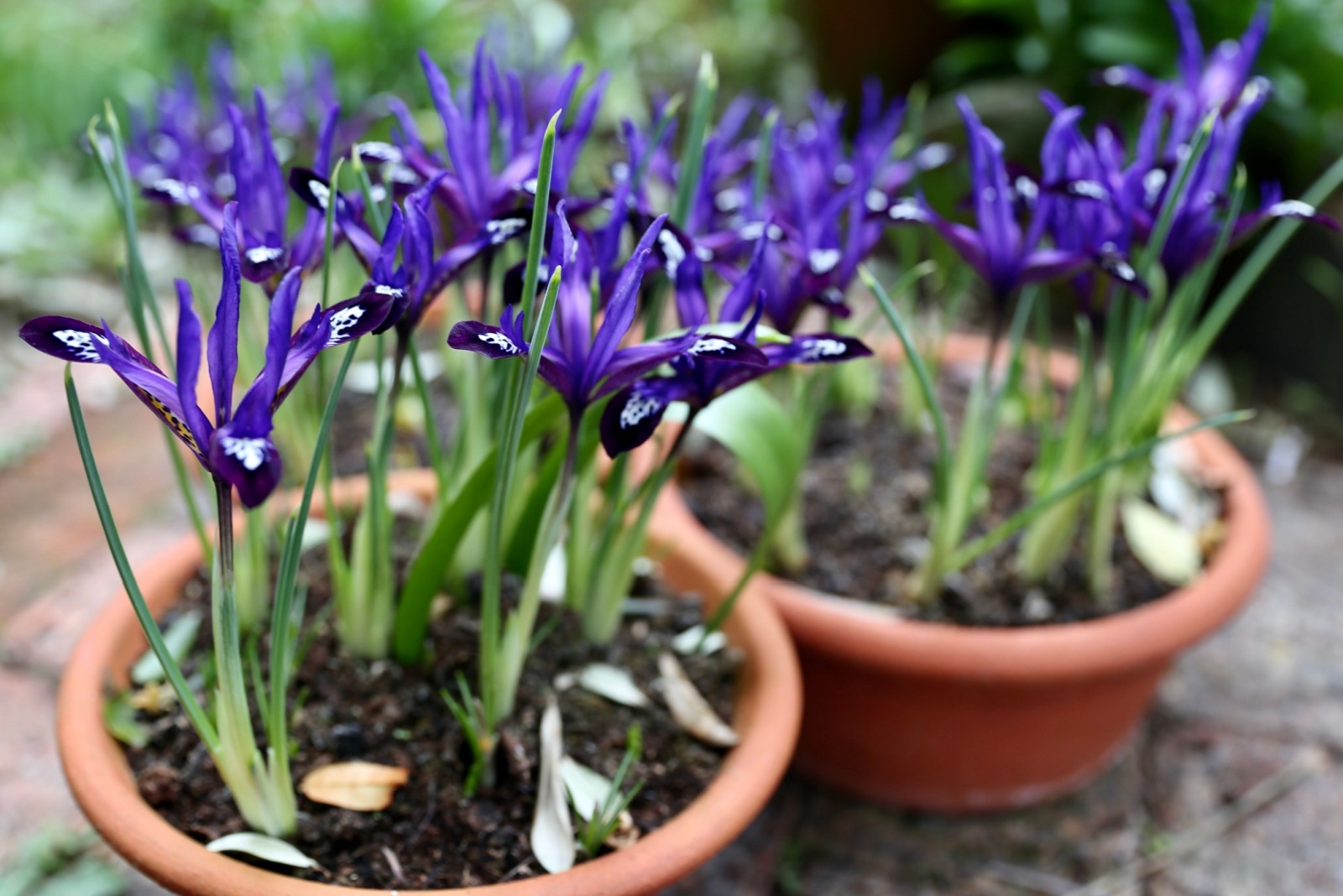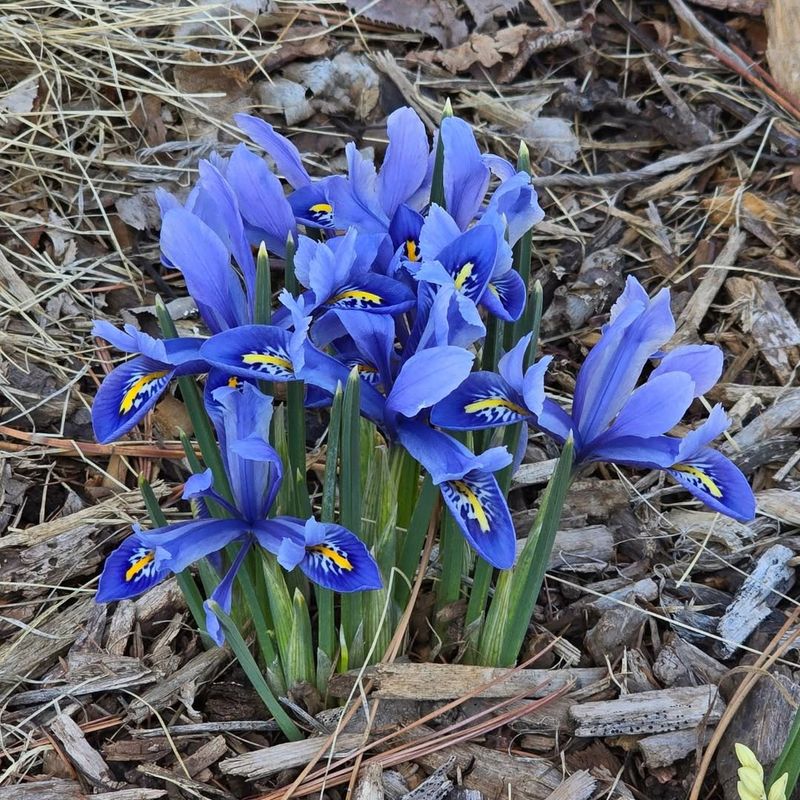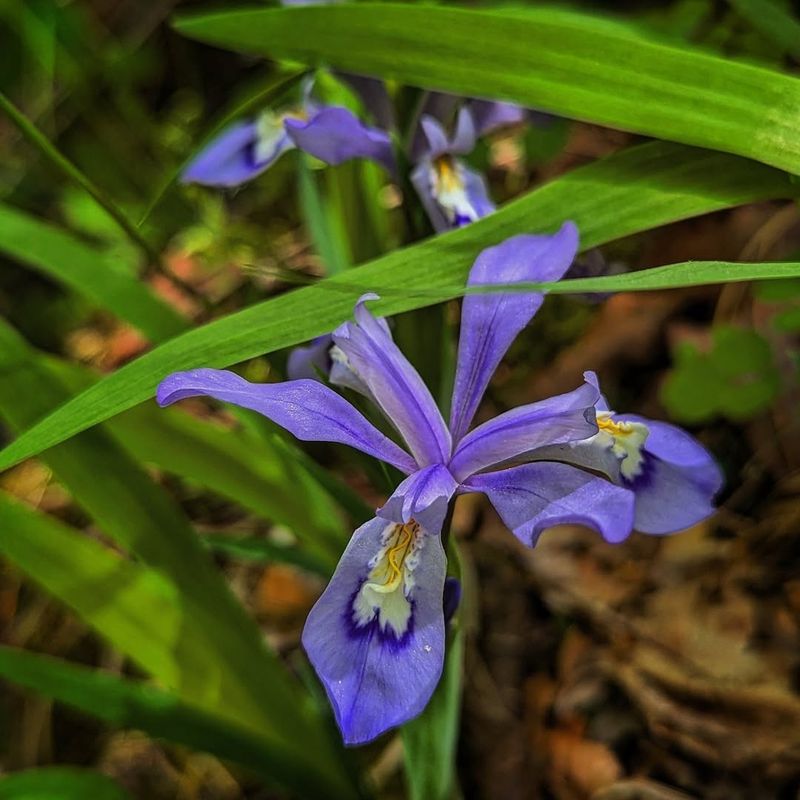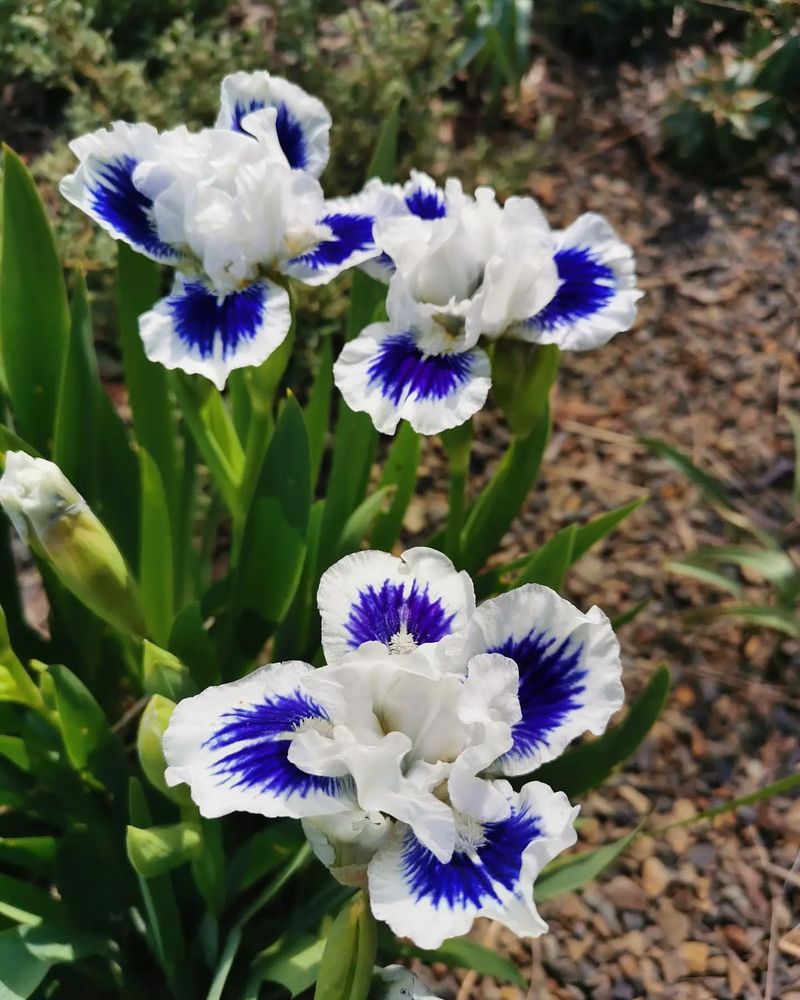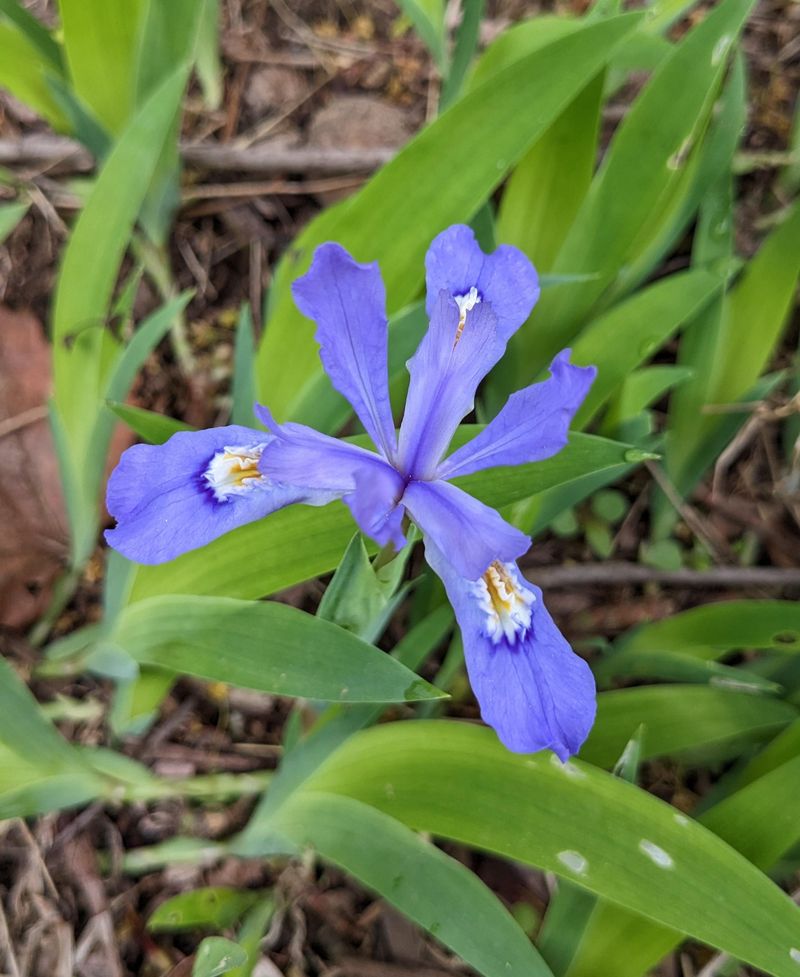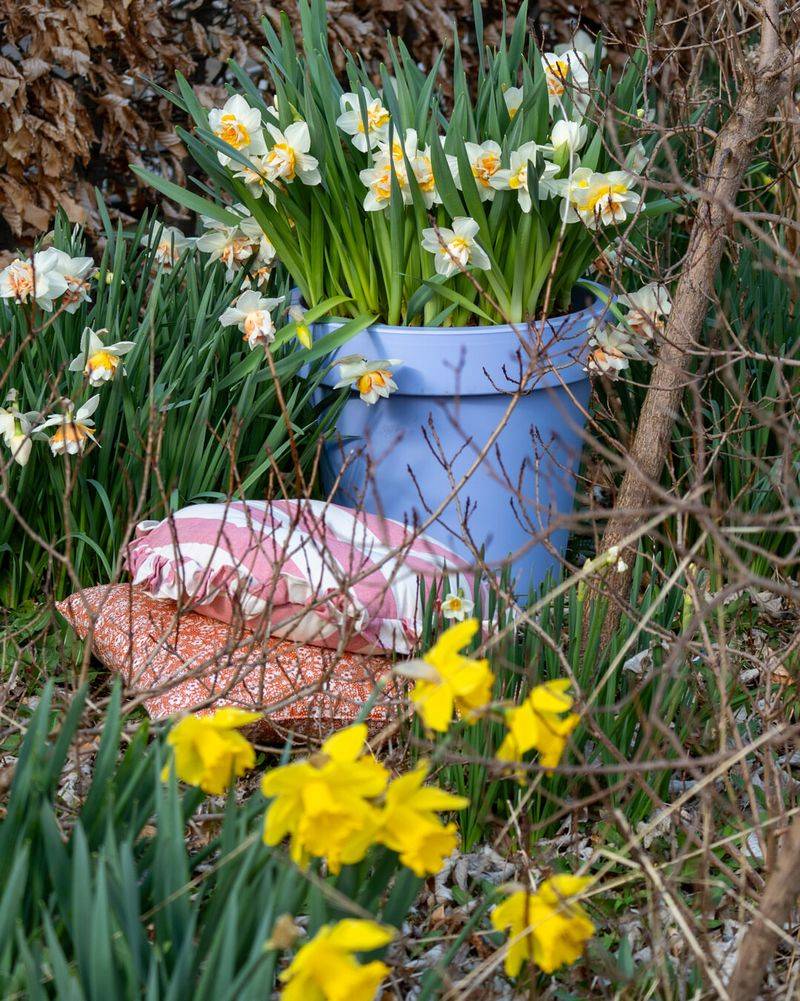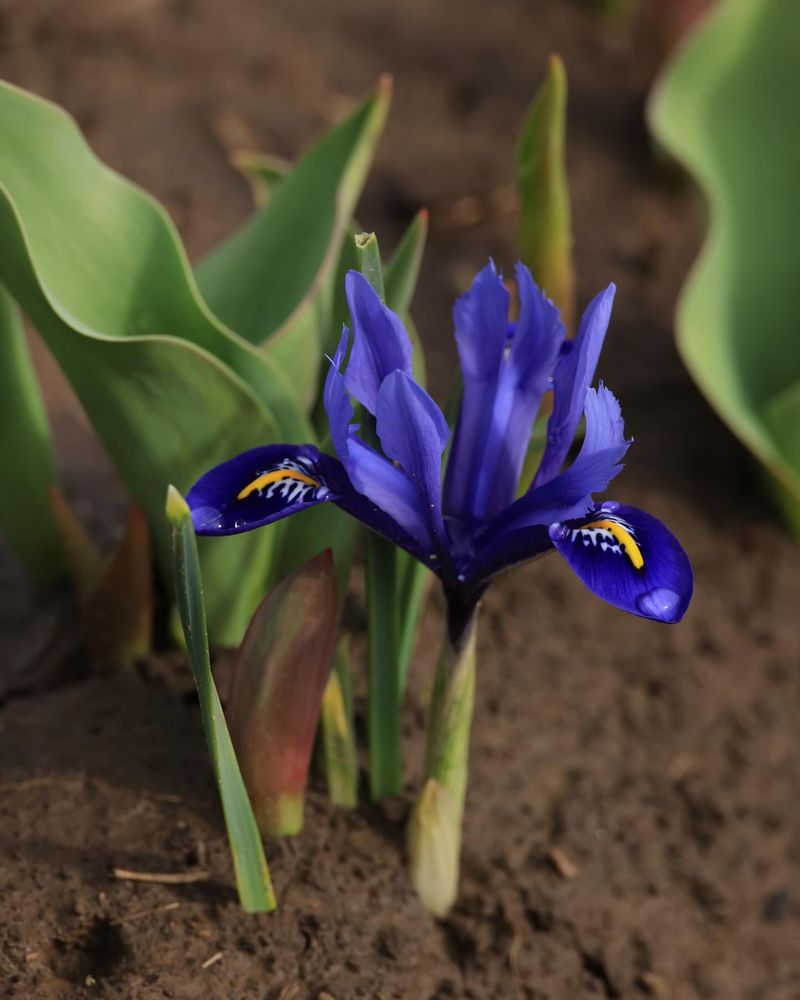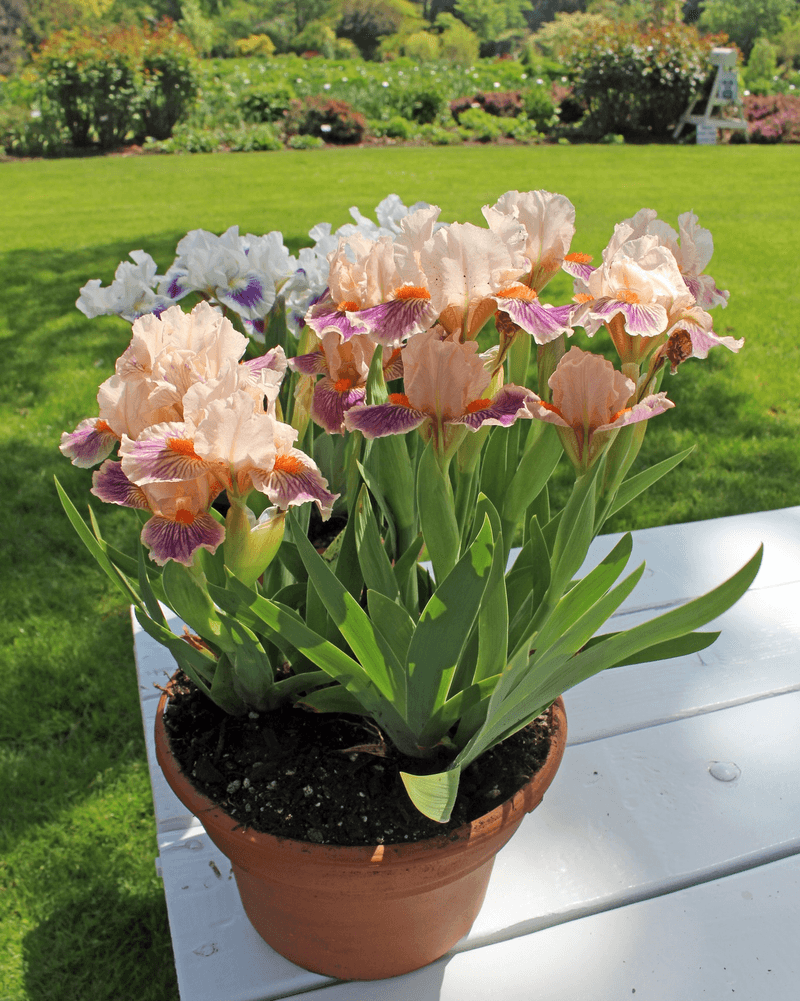Dwarf iris brings magical bursts of color to South Carolina gardens when most plants are still waking up from winter. These tiny but mighty flowers can transform your yard into a springtime paradise with minimal effort.
October planting gives these bulbs the perfect head start for a spectacular early spring show.
1. Perfect Timing For Root Development
October’s cooler soil temperatures create the ideal environment for dwarf iris bulbs to establish strong root systems before winter arrives. The bulbs need this settling-in period to prepare for their early spring performance.
Unlike spring planting, fall planting allows iris roots to grow slowly and steadily without the stress of immediately producing flowers. This head start means bigger, healthier blooms when February and March roll around.
2. Beat The Winter Blues With February Blooms
Imagine stepping outside on a chilly February morning to find cheerful purple, blue, and yellow blooms dotting your garden. Dwarf iris flowers appear when most gardens still look barren and lifeless in South Carolina.
Their early appearance makes them extra special – like nature’s first party after a long winter sleep. Your neighbors will wonder how you managed to have flowers while their gardens are still dormant.
3. Thrives In South Carolina’s Climate Conditions
South Carolina’s mild winters create the sweet spot for dwarf iris success. These hardy little flowers need some cold to trigger blooming but can’t handle extreme freezes found further north.
Our state’s sandy, well-draining soils prevent the bulb rot that plagues iris in wetter regions. The gradual warming in late winter provides exactly what these early bloomers crave – cool nights and increasingly warm days to signal it’s showtime.
4. Low Maintenance Flower Power
Got a busy life? Dwarf iris might be your garden soul mate. Once planted, these self-sufficient beauties require almost zero maintenance compared to fussier spring flowers.
They naturally multiply year after year, creating bigger clumps of color without additional work. Pests generally ignore them, and deer usually pass them by in favor of tastier treats. Even during dry spells, established dwarf iris rarely needs supplemental water.
5. Perfect Partners For Other Spring Bulbs
Dwarf iris plays nicely with other spring flowers! Plant them alongside early daffodils and crocus in October for a coordinated color show when spring arrives.
Their short stature (usually 4-6 inches tall) makes them perfect front-row performers in garden beds, while taller flowers provide the backdrop. The contrasting heights create visual interest, and their different bloom times ensure your garden has continuous color for weeks.
6. Wildlife-Friendly Early Food Source
Early-blooming dwarf iris provides critical nectar for hungry bees and butterflies just emerging from winter. These little flowers become vital food stations when few other plants are flowering in South Carolina.
Watching a fuzzy bumblebee visit your iris on a mild February day brings special joy. By planting in October, you’re setting up a wildlife buffet that helps local pollinators survive the lean times between winter and full spring.
7. Stunning In Containers And Small Spaces
Don’t have a big yard? No problem! Dwarf iris thrives in containers, making them perfect for patios, balconies, or tiny garden spaces. Their compact size creates big impact without needing much room.
Plant several bulbs in October in a weather-resistant pot with good drainage. Place containers near your front door or windows where you’ll enjoy the surprise of early blooms. Even apartment dwellers can experience the joy of South Carolina’s early spring through these miniature garden gems.

